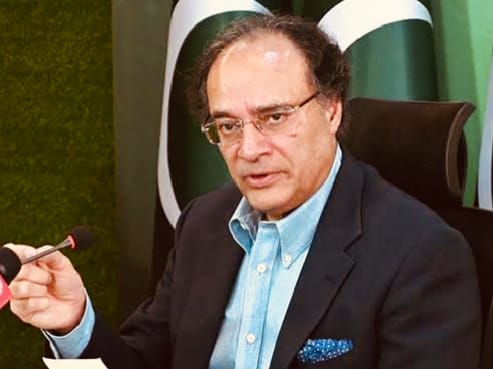Islamabad: Federal Finance Minister Muhammad Aurangzeb presented the National Economic Survey 2024-25, which highlighted the improvement in several key indicators of Pakistan’s economy. According to the Finance Minister, the country’s economy is moving towards stability, and GDP growth was recorded at 2.7 percent during the current fiscal year, while the inflation rate was limited to 4.6 percent. The policy rate, which was 22 percent last year, has now come down to 11 percent, which has been described as a positive step for the economy.
The finance minister said that the IMF program has restored Pakistan’s confidence in global financial institutions and the main objective of this program was to achieve macroeconomic stability. He said that there has been a significant reduction in global inflation, which was 6.8 percent two years ago, and now it is only 0.3 percent, while the inflation level in Pakistan has also decreased to 4.6 percent. Foreign exchange reserves have also recorded a remarkable increase in the current fiscal year.
Muhammad Aurangzeb said that we need long-term reforms to stabilize GDP, and we are moving in the right direction. He appreciated the role of Prime Minister Shehbaz Sharif and the former caretaker finance minister and said that the current economic policies are being taken forward continuously. He added that the tax-to-GDP ratio has reached the highest level in the last five years and important reforms have been introduced to improve the performance of the FBR.
The Economic Survey report revealed that the power sector has improved significantly over the past year, and reforms have also been made in the governance of distribution companies. According to the report, freelancers earned $400 million, which is a welcome sign for the digital economy. Petroleum products grew by 4.5 percent, pharmaceuticals increased by 2.3 percent, while the chemical sector recorded a decline of 5.5 percent.
Significant progress was also made in the education sector, where 0.8 percent of GDP was spent and Rs61.1 billion was allocated for higher education. The literacy rate across the country was 60.6 percent, 68 percent for men and 52.8 percent for women. There are currently 269 universities operating in Pakistan, of which 160 are government institutions and 109 are private institutions. Under the Skill Development Program, 60,000 youth have been trained in sectors such as IT, agriculture, mining, and construction.




